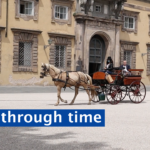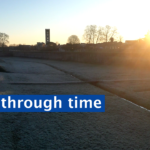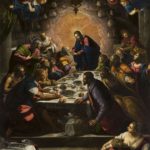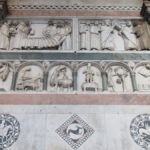
Lucca through time – May
It’s finally May. The temperatures are warmer and make you feel like going out. The elegantly dressed young man we saw in April is now horse riding and holding a fresh flower in his hand.

It’s finally May. The temperatures are warmer and make you feel like going out. The elegantly dressed young man we saw in April is now horse riding and holding a fresh flower in his hand.

Here we are in the month of January. The first month of the year, and in the panels of the Duomo of Lucca it is represented by a farmer warming himself in front of a fire. Winter can be cold and bleak and shows its true colors and multiple faces in the city and in the countryside in this stretch of Tuscany which lies between the mountains and the sea. The city appears monumental and immobile due to a diminished presence of people. The countryside appears even colder and more hostile. Yet, both have a unique and irresistible appeal, recalling emotions of long-ago, human and collected, with an invitation to remain safely at home, cozy and snug. Even animals, be it city or country, adapt to winter mode as did medieval man, as does contemporary man today. Some ancient...

This year, more so than in past decades, we were forced to change the pace of our lifestyles. We had to modify our way of working and even, what became, our long breaks of free time. It sometimes seemed as if we were frozen in time. At this point, life has placed us in these particular circumstances, offering us a chance to savor the passing of time in a different way, almost as in days of long-ago. Perhaps it is for this reason, that we, who tell the stories of our territory and of its past inhabitants on a daily basis, began studying the medieval panels of the months in the loggia of the Duomo of Lucca more carefully. It is almost as if that time of yore has come back, in order that we reflect more carefully on...

Eleven Unusual Things to See in Lucca If you search the web for things you should see or do when visiting an area, you’ll probably find a list of the top ten things and usually they’re pretty typical. Well, I’m suggesting eleven because I’ve decided to go one better. Actually, if I were to think of all the particular places or things to see or do in Lucca, the list would be endless. Inside the Cathedral of San Martino, at the third altar of the right aisle, there is a painting of the Last Supper of Christ painted by the famous Venetian painter Jacopo Robusti, known as Tintoretto. This was the last work painted by the artist, aided by his son Domenico, dating 1594, the year of his death. This painting, like the others present in the church, is...

We turn another page as we enter the cathedral. The church and its furnishings are the outcome of almost five hundred years of expansions, modifications, and restorations. Altars, sculptures, paintings, intarsia, frescoes, furnishings, and organs have been added, removed, modified or stratified in the course of the centuries that have marked the history of the building and its relationship to events in the history of Lucca. Nonetheless, the emergence of figurative art among all the modifications is substantial and was carried out between the 15th and 16th centuries. In the right transept, there is the monumental altar containing the relics of Saint Regulus and also dedicated to Saints John the Baptist and Sebastian. This work is by the Renaissance artist Matteo Civitali of Lucca, who produced the majority of the sculptures and reliefs found within the cathedral in the...

According to a recent survey, as reported by the Italian news agency ANSA, one out of every three people like to immortalize what they are about to eat with a photo, shifting from a sensation of sight to a more intimate and personal sensation of taste. In essence, that is why I believe this itinerary is still perfectly in sync with today: a one hundred percent Lucca itinerary melded in the cultural and culinary microcosm of the many Italian cities that constitute the multi-flavoured and multi-coloured palette of multifaceted Italy. We can therefore compare iconographic elements linked to food that, wisely elaborated through time, have served as instruments to both educate the masses and entertain the wealthy of Lucca. The city has always been a commercial centre, often extremely sacred and pious, yet even very profane and at times,...